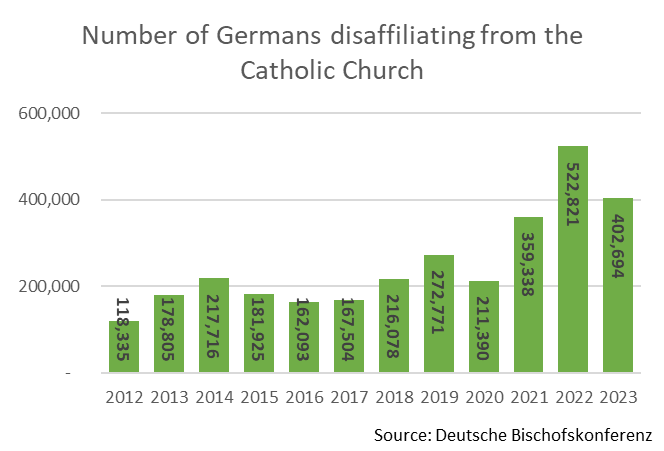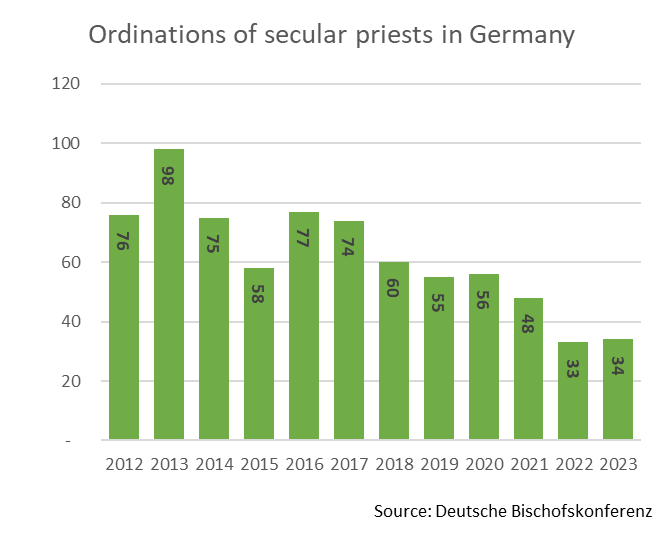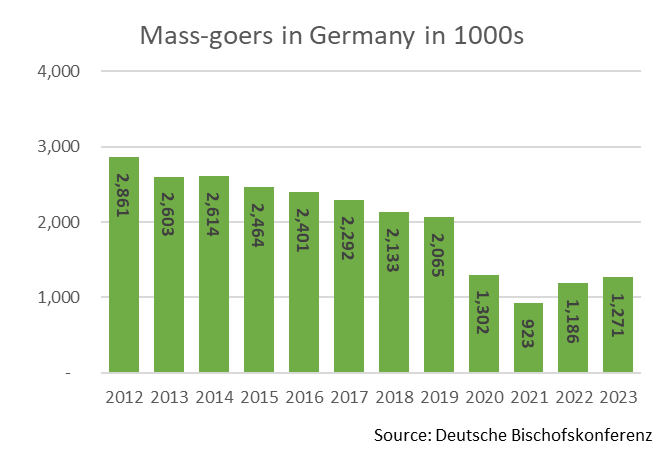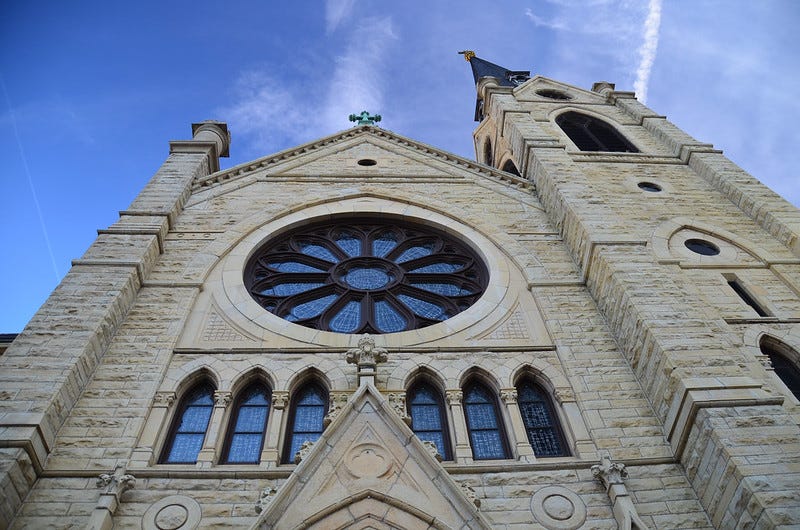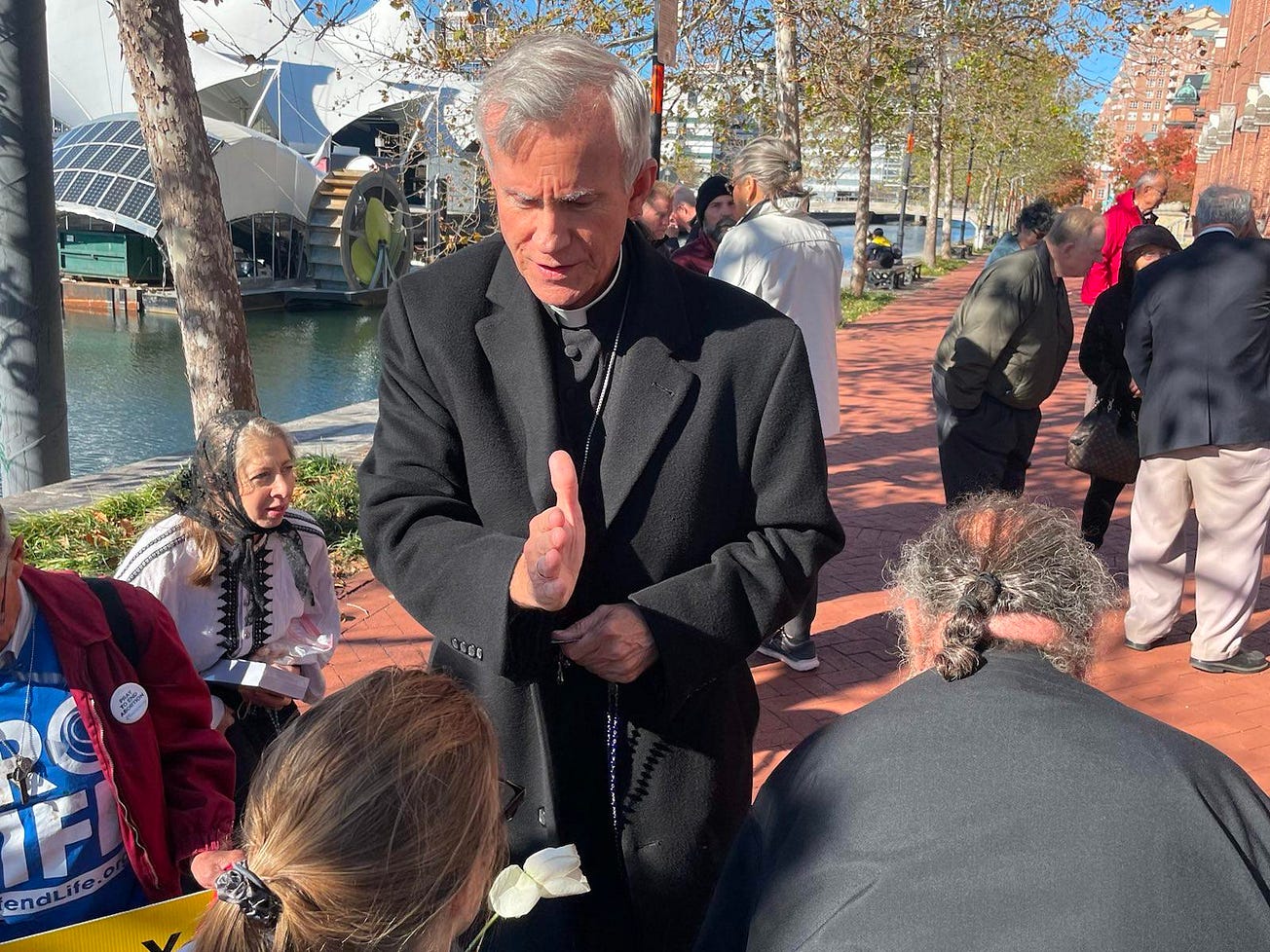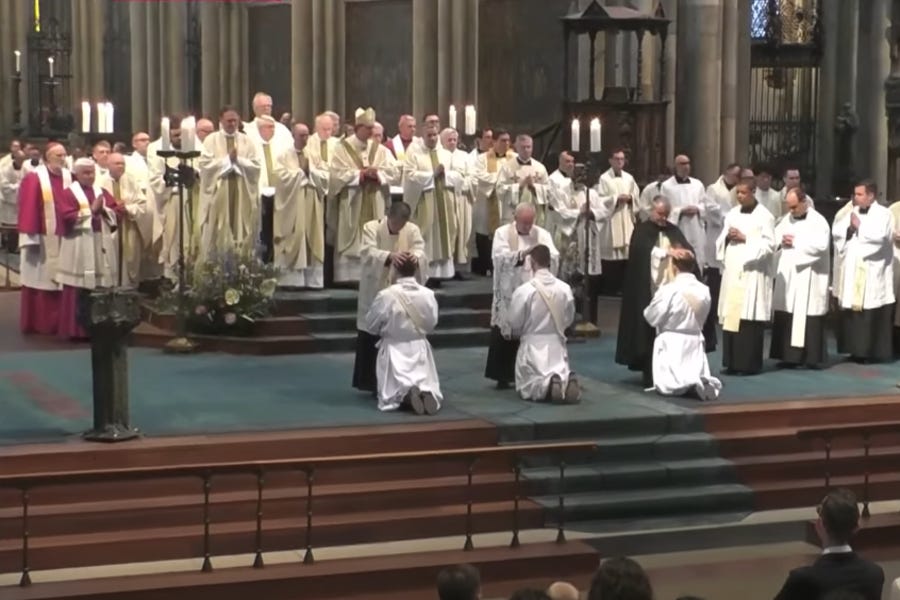New figures indicating that more than 400,000 Catholics disaffiliated in Germany in 2023 show that the Church is in a “comprehensive crisis,” Bishop Georg Bätzing said Thursday.
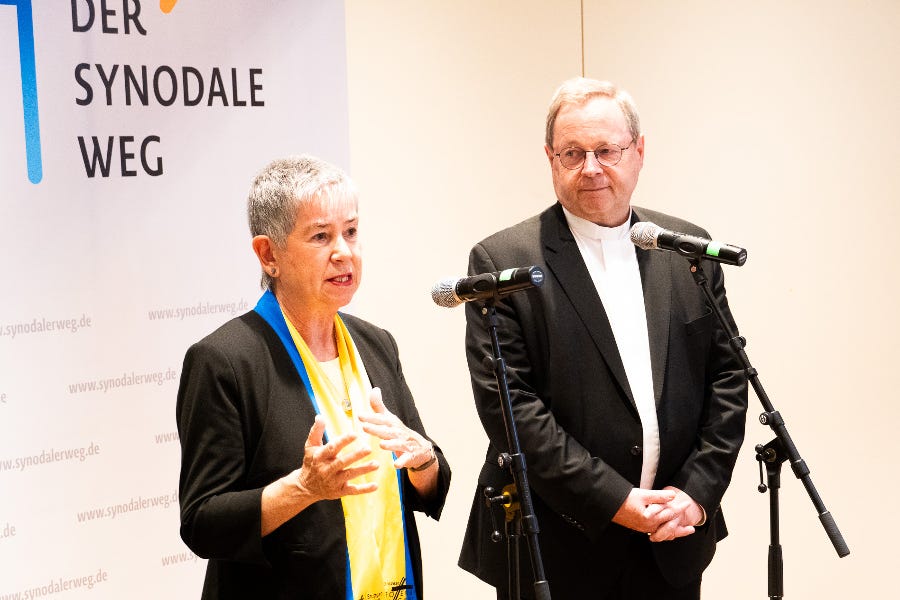
In a statement following the publication of new Church statistics June 27, the German bishops’ conference chairman insisted that the changes proposed by the country’s controversial “synodal way” were urgently needed.
“Reforms alone will not solve the Church crisis, but the crisis will worsen without reforms. And that is why change is necessary,” he said.
According to the German bishops’ conference, there were 402,694 “church exits” in 2023, the second-highest annual figure after the record of 522,821 set in 2022.
A total of 1,779,014 people have said they officially left the Church in Germany since 2019, the year that the synodal way was launched, in the wake of a devastating abuse crisis.
According to the bishops’ conference figures, there were 20.3 million Catholics in Germany at the end of 2023, representing 24 % of the total population of 84.7 million.
In the crisis-hit Archdiocese of Cologne, which has the most Catholics of Germany’s 27 dioceses, 40,913 people formally left the Church last year, compared to 51,345 in the previous year.
Cologne vicar general Msgr. Guido Assmann expressed a degree of relief at the new statistics.
“The trend that we Catholics are becoming fewer has continued,” he told the German Catholic news website domradio.de.
“Nevertheless, there is also the positive development that the number of people leaving the Church has decreased compared to the previous period.”
To formally leave the Church in Germany, a baptized Catholic must book an appointment at a local registry office or court, provide official documents, and pay a fee of around $35. They are given a certificate confirming that they are no longer registered and therefore not liable for the country’s church tax.
They also receive a letter from local Church officials, informing them they can no longer receive the sacraments, hold Church posts, or serve as baptismal or confirmation sponsors.
The new bishops’ conference figures highlighted the steep decline in priestly vocations in Germany.
A total of 38 new priests (34 secular and 4 religious) were ordained in the country in 2023, down from 45 (33 secular and 12 religious) the year before.
In comparison, 88 priests were ordained in 2023 in neighboring France, which has a larger population of practicing Catholics.
In Austria, which has roughly a quarter of the number of baptized Catholics of Germany, there were 29 priestly ordinations in 2023.
The decline in priestly ordinations appears to be continuing in Germany in 2024. Just seven priests are due to be ordained in the five Catholic dioceses of North Rhine-Westphalia — Germany’s most populous state — this year.
For the first time since the Second World War, there will be no priestly ordinations in the Diocese of Würzburg and the Archdiocese of Bamberg, which are both located in the German Catholic Church’s traditional heartland of Bavaria.
There were a total of 11,702 priests in Germany in 2023, including 5,971 parish pastors, down from 11,987 in 2022.
Other sacraments are also on a downward trend, according to the new statistics.
There were 131,245 baptisms in Germany in 2023, down from 155,173 in 2022. Confirmations fell to 105,942, compared to 110,942 the year before.
The number of church weddings decreased to 27,565, from more than 35,000 the previous year.
But the new statistics also showed positive developments.
The proportion of Catholics attending Mass rose from 5.7% in 2022 to 6.2% in 2023.
The number of people joining the Church also increased, from 1,447 in 2022 to 1,559 in 2023.
The Diocese of Görlitz — which is located in the former East Germany and has the smallest Catholic population among Germany’s dioceses — reported the highest proportion of regular Mass attendance, at 13.9%.
The neighboring dioceses of Aachen and Trier, in western Germany, had the joint lowest proportions, at 4.2%.
Those disparities highlight the stark regional differences in Germany, a federal republic that was reunified in 1990, following the collapse of the Communist Bloc.
—
—
The German bishops’ conference is expected to announce imminently how much the Catholic Church received through the contentious church tax in 2023.
The Church in Germany raised a record 6.848 billion euros in church tax in 2022. But bishops believe that the Church’s tax haul will fall significantly in the coming years due to the declining number of Catholics and worsening economic conditions.
The Diocese of Mainz, for example, is preparing to curb its expenditure by around 25% in the years ahead. The diocese in west-central Germany serves around 621,000 Catholics.
The Protestant Church in Germany (EKD) — a federation of 20 Lutheran, Reformed, and United regional churches — announced in May that it lost 380,000 members in 2023.
The EKD’s church tax revenue fell by 5.3% in 2023.
EKD Council chairwoman Bishop Kirsten Fehrs said: “We are becoming a smaller and poorer church, we have to face this fact.”

